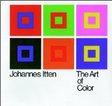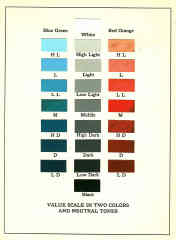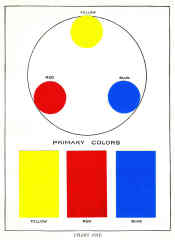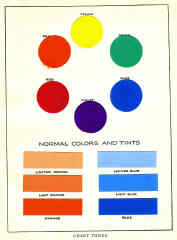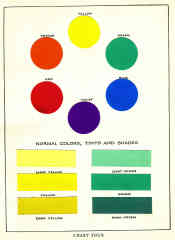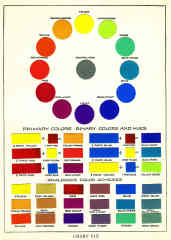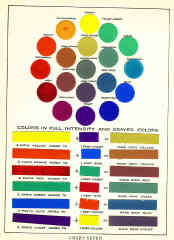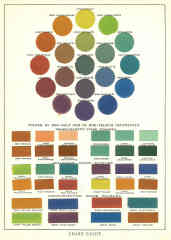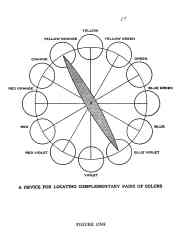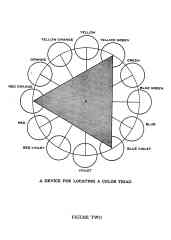IN physics we analyze a ray of light; we separate it into its component parts; we discover laws of transmission, refraction, reflection; we determine the wave lengths of different Colors and the effects of different Colors upon the retina of the eye. Such study is purely physical, and has to do with the wonderful properties of Light, the source of all Color. The results of such study are of great scientific value, but they contribute very little to the cultivation of the Color sense. The physicist's aims are purely scientific. He tells us that a ray of sunlight separated by means of a spectroscope into its component parts, shows red, green and blue-purple as the three elements which in various combinations produce all other colors. But the artist, the designer, the maker of dye stuffs and other coloring matter cannot make use of these physical elements of Color. The artist, the designer, the decorator, the printer, the dyer, the house painter, the teacher, the pupil, the citizen is dependent for Color expression not on rays of light but upon pigments. Pigments are symbols of Color. They are Color representations, and their combinations produce results that differ in many particulars from the combinations of different rays of Colors secured from Light.
Pigment is obtained from various sources. As in the days of the Egyptians, we must still go to Mother Earth for our most important and permanent Colors, such as yellow ochre, raw sienna, the umbers, vandyke brown, cobalt, ultra-marine, cadmium and white. From the animal kingdom we derive our carmine, crimson lake, purple lake, indian purple, sepia and other colors. Vegetables and plants are the sources of gamboge, indigo, and the family of madders. In the early days the master dyer and painter made his own colors, and he worked with a limited palette. He himself ground, or his apprentice did, all the colors that he required. In fact, apprenticeship began with color grinding. Gradually the palette of the painter was increased by the addition of other pigments, discovered by various masters. In time the manufacture of colors became a specialized occupation, a distinct profession, until today we find it a vast Color industry, of immense commercial importance.
The physicist, as we have said, in his investigations goes to the source of all Color, the white light of the sun. He finds that a ray of white light when passed through a glass prism and thrown upon a wall or screen, produces a band of Color like a rainbow. He calls this band the spectrum. These spectrum colors he uses in all his experiments and deductions. He is not concerned if combinations of pigments do not bear out the truths that he discovers in dealing with the spectrum Colors themselves. The artist and the industrial worker, however, must deal with pigments and with those principles and formulae that concern them. It does not matter to the makers of dyes if, as the physicist says, red light and green light in mixture produces yellow light, when they find by experiment that red pigment and green pigment in mixture produce gray. No matter what the spectroscope may demonstrate regarding the combination of yellow rays of light and blue rays of light, the fact remains that yellow pigment mixed with blue pigment produces green pigment. Similarly regardless of the spectroscope, blue pigment mixed with red pigment produces violet pigment.
